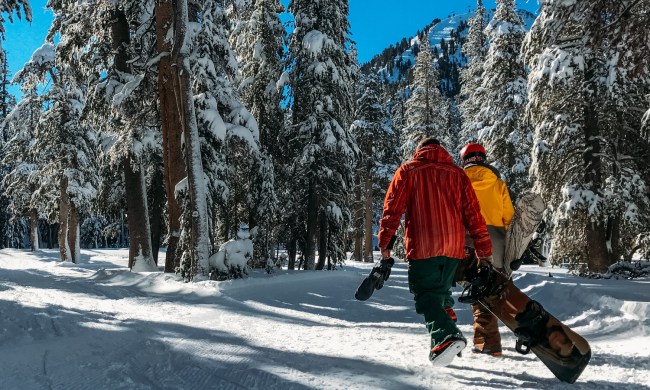Along with skiing, sledding, and snowmobiling, ice fishing is one of winter’s true joys.
No really, it is. Take it from a native southern Californian who, just a few short years ago, would have laughed in your face if you’d suggested such a thing. In the past, the closest I wanted to get to snow and cold was watching White Christmas on a DVD player while swaying in a hammock chair under a king palm. And now look at me: counting down the days until I can throw on three merino wool base layers and my heaviest down parka and trek out into infinity, trusting the cold I used to despise to keep me safe from an untimely death. Honestly, there’s nothing better than being out on a barren white expanse of frozen water that could easily kill you in a second to make you feel alive.
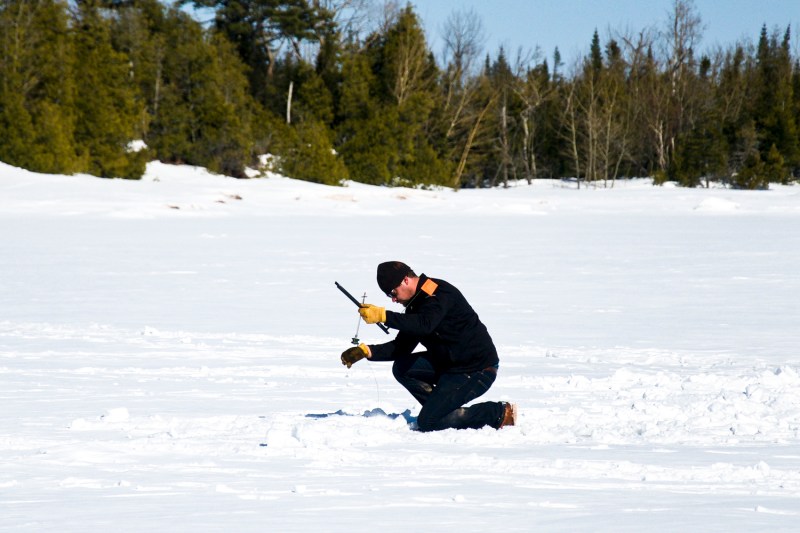
If existential thrills aren’t your bag, though, ice fishing is also an excuse to get together with your buddies, leave your worries on the shore, and hang out in a small ice hut with hot toddies in hand and shoot the shit while waiting for a bite. The good thing is, most every fish you catch in the summer, spring, or fall can also be caught in winter (and some are even easier to catch due to their cold-slowed locomotion), including bluegill, sunfish, perch, crappie, trout, pike, walleye, and sturgeon.
Now that we’ve established that ice fishing is fun as hell, let’s not forget that it’s also dangerous. For the novice ice fisherman, there’s a pretty steep learning curve, especially when it comes to fishing methods and gear.
To help you get out on the lake and get a crappie in the hand, we’ve rounded up the information you need stay safe and warm, along with all the gear you need to stalk, snag, and haul in your catch.
Ice Fishing Safety
The most important piece of safety advice we can provide is also the simplest: never ice fish alone. To ice fish alone is to throw caution, and possibly your life, to the wind. Always fish with a partner — an extra pair of hands can be a literal lifesaver if an accident should occur. Hypothermia can set in within minutes of falling into 32-degree water and can very quickly kill. Avoid death by ice and be sure to bring a friend.
Additionally, you should always tell someone where you’re going, what you’re doing, and when you expect to return. That way, if the ice you’re fishing on breaks apart and floats away with you on it, someone will be expecting your return. If you fail to do so, they can alert the authorities. And don’t forget to bring along appropriate emergency items such as a life jacket and a cell phone, and ice rescue picks or claws.

A Few Words about Ice
The recommended minimum thickness for a human to walk on ice is 4 inches. Some anglers take their lives into their own hands and will make their way on only two inches. Do not do this. You’re more likely to end up in the drink than with a catch, so please, again, just don’t. If you’re planning on taking a snowmobile or ATV out onto the ice, at least six inches of ice are required, and, if you live the life of luxury and own your own ice shanty, you’ll need a whopping 7-12 inches. For full-sized trucks, don’t even think about driving on ice unless it’s well over a foot in thickness. Anything less and your F150 will be sleeping with the fishes rather than hauling them. Be aware that ice thickness and strength can vary within the same body of water. One area may be safe, while only a foot away danger lurks below.
Always be on the lookout for “rotten ice.” Rotten ice can most easily be identified by discoloration, but cracks, breaks, holes, water flows, and pressure ridges are other good indications of poor ice quality and danger. Remember this old adage when ice fishing: “Thick and blue, tried and true. Thin and crispy, way too risky.”
Another caution about ice: it flows. Ice (especially on large bodies of like Lakes Michigan and Superior) can easily be moved and broken apart by the wind. In some instances, the right conditions occur where a large portion of ice will break away from the shore and flow out into open water, leaving fisherman, their gear, and even vehicles drifting miles offshore, resulting in full-scale rescue operations that can include helicopters, boats, and hovercraft. So, don’t be the dude that requires rescuing.
How to Make a Hole in the Ice
To make a hole in the ice, you’ll need an ice saw, an ice chisel, or an auger (either hand or gasoline powered). Use any of these tools to dig down through the ice until you reach open water. The hole should be no larger than 10 inches (so people don’t accidentally fall in) and no smaller than eight inches (it has to be big enough to actually pull a fish through).
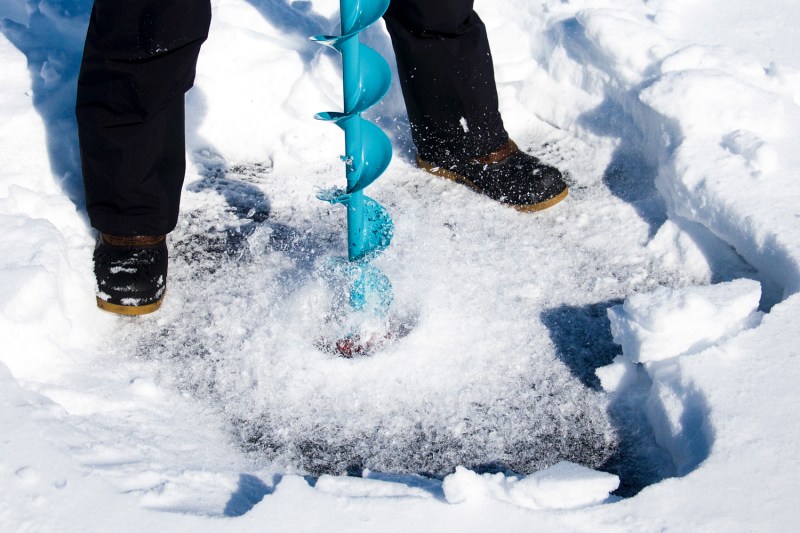
Then, using an ice skimmer, remove any remaining chunks of ice in the hole; you want the hole free from the ice when fishing so that it doesn’t accidentally set off your tip-up or fool you into thinking you have a bite. If the temperature is below 20 degrees Fahrenheit, it is almost impossible to keep the hole open, so be sure to choose a day when the temperature is at or below freezing, but above zero. And remember, when abandoning your hole, make sure to mark it with a tree branch, ice pile, or some other clearly visible object to alert others to its presence. Safety, safety, safety!
How to Ice Fish
First, check with your state’s Department of Natural Resources for more information on ice fishing, rules, regulations, and licensing requirements. Never go fishing without a license — they exist for a reason, namely, preventing overfishing and the loss of lake stock.
Finally, select your fishing method. There are three conventional ways to ice fish and one old-school aggro method involving a club.
Fish don’t expend as much energy during the winter months, meaning they are both slow to move and slow to react. If you move your bait or jig too fast, a fish might release the bait or hook in order to save energy — the best method is slow and steady. Eventually, you’ll win the race.
Light-Rod Fishing
You can use your standard summer rod or purchase a specially designed ice fishing rod
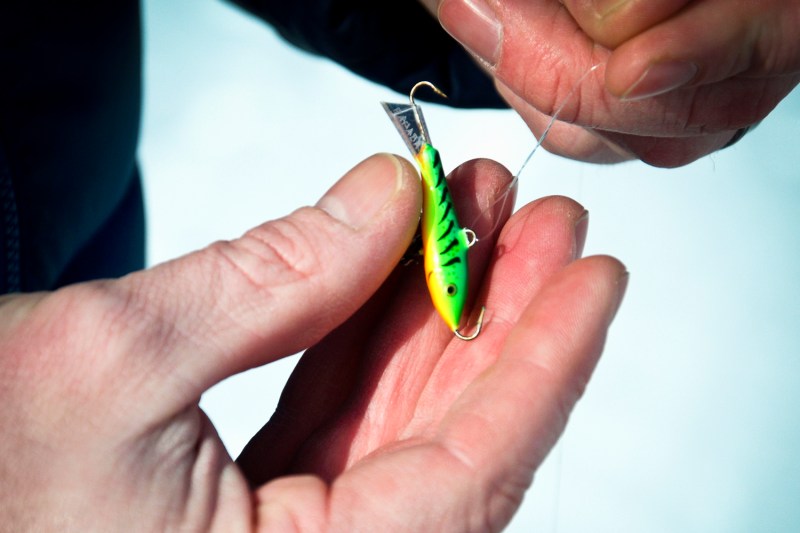
Light rod fishing requires the use of a jigging lure and bait, either live or artificial. The best live bait to use is wax worms or maggots. If using live bait, be sure to keep the bait warm and, you know, live, until you’re ready to put them on the hook. For the actual fishing, start with a long line cast to the bottom and wait. If nothing is biting, move further up the water column and try again. While waiting, gently move the line and up and down, slowly, yet steadily. If all else fails, go high-tech and use a fish finder (like the one below) or even an underwater camera.
Tip-Up Fishing
A tip-up is a rather ingenious device that allows you to fish multiple holes without being forced to babysit each one. Tip-ups are rigs that straddle the hole and are used to suspend a baited hook or jig at a certain depth within the body of water below. Usually, a fish finder is employed to figure out at what depth most of the fish are and using that information, you can set the tip up for that specific depth and then walk away. You do want to keep an eye on the rig though, since a tug on the line or a bite will deploy a flag that “tips up,” letting you know you’ve hooked something.
Spear Fishing
This is pretty self-explanatory and also the least popular of the three conventional ice fishing methods. This method involves using a multi-pronged spear
Clubbing
Clubbing is an old method seldom used today. The process is fairly simple: An angler walks on clear ice in shallow water and when he sees a large fish under the ice he’ll take a large club and slam it directly onto the ice above the fish. This temporarily stuns the fish, allowing the fisherman to quickly cut a hole and remove it. This is the most primitive form of ice fishing and also, probably the most hardcore. The one benefit to clubbing over the other methods is that it involves very little gear and doesn’t require you to head any farther out on the pond than the shallows near shore, providing a small safety blanket not found with the other fishing styles.
Get the Gear
Dressing for ice fishing takes a little common sense and outwear you’ve probably already got in your closet. Start with a moisture-wicking base layer along with long underwear. On top of that, put on a flannel or sweatshirt, over that a bib overall or snowsuit, followed up with a winter waterproof jacket, thick wool socks, waterproof boots with good traction, a hat, or ski mask, and gloves.
Below, you’ll find our suggestions for some of the best pieces of ice fishing gear.
Kamik William Boot – $150
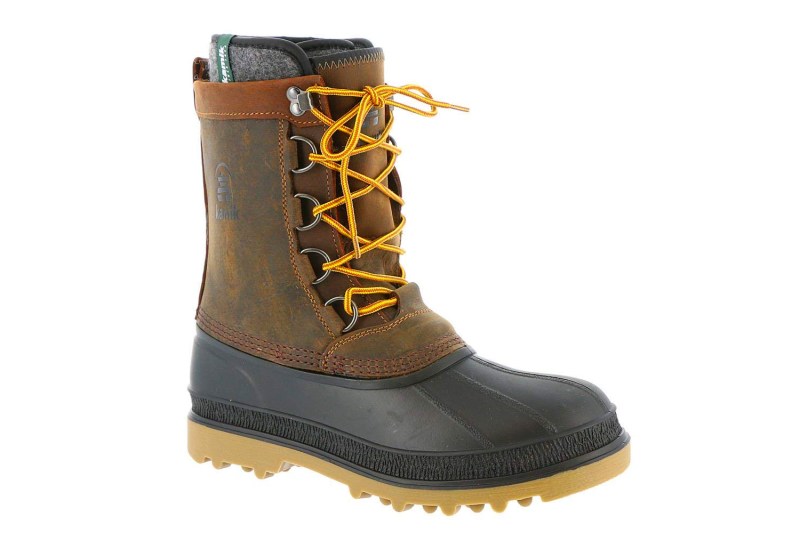
Shop Now
Patagonia Down Sweater – $229

Frabill Waterproof Bib – $143-$250
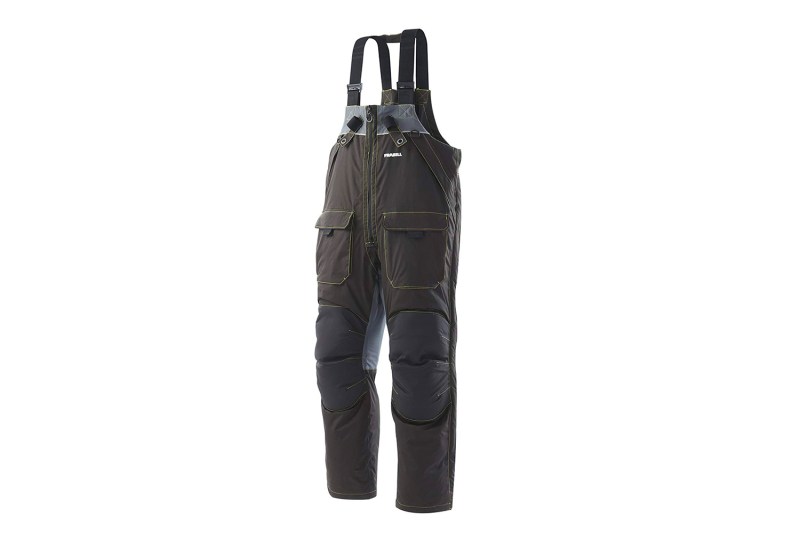
Shop Now
Frabill Blackhawk Assault Tip-Up – $14
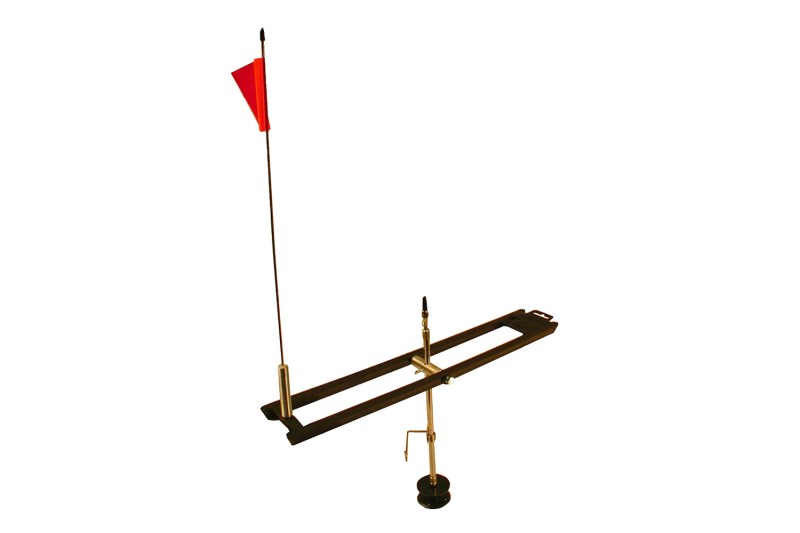
Shop Now
Nils Master UR600C Cordless Drill Auger – $200
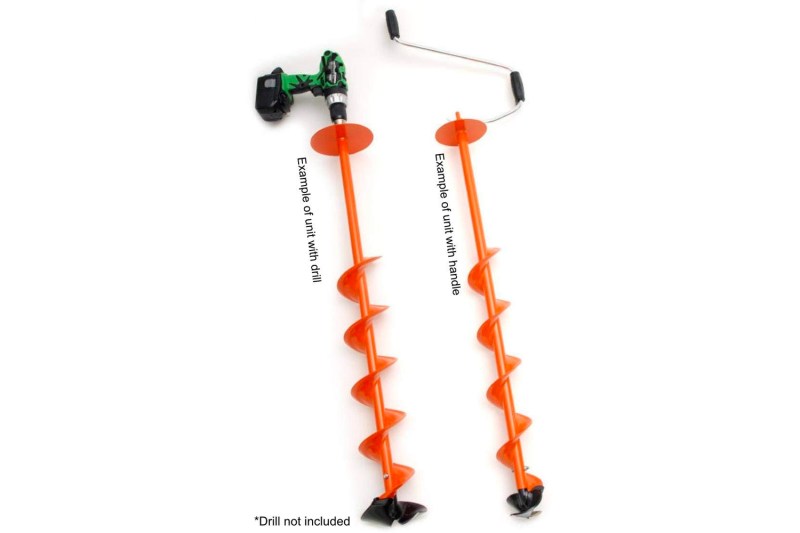
Shop Now
Berkley Ice Fishing Scoop – $8
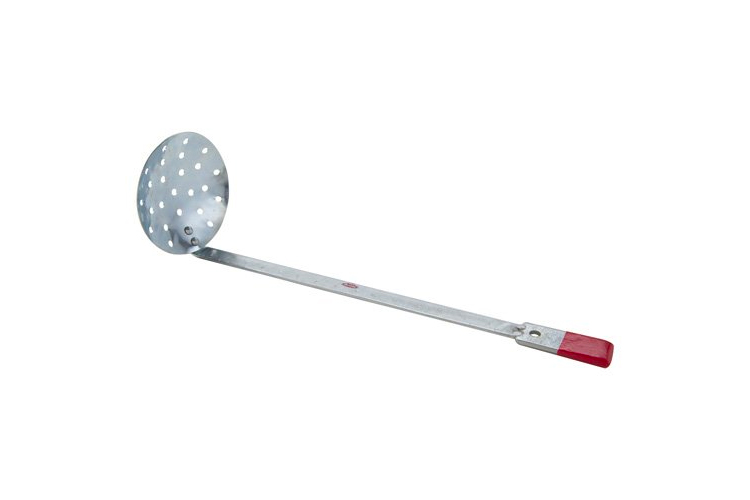
Shop Now
Frabill Sit-N-Fish Bucket – $24
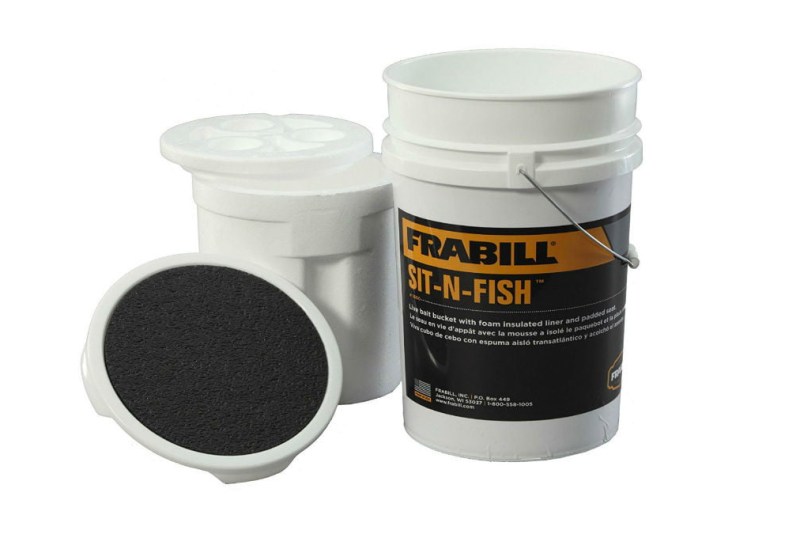
Shop Now
Garmin Fish Finder – $100
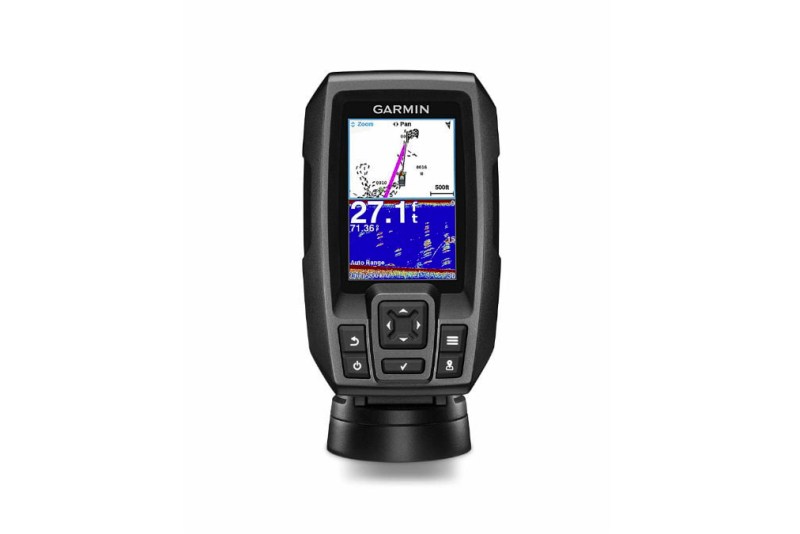
Shop Now
Eskimo Fatfish Insulated Ice Shelter – $300
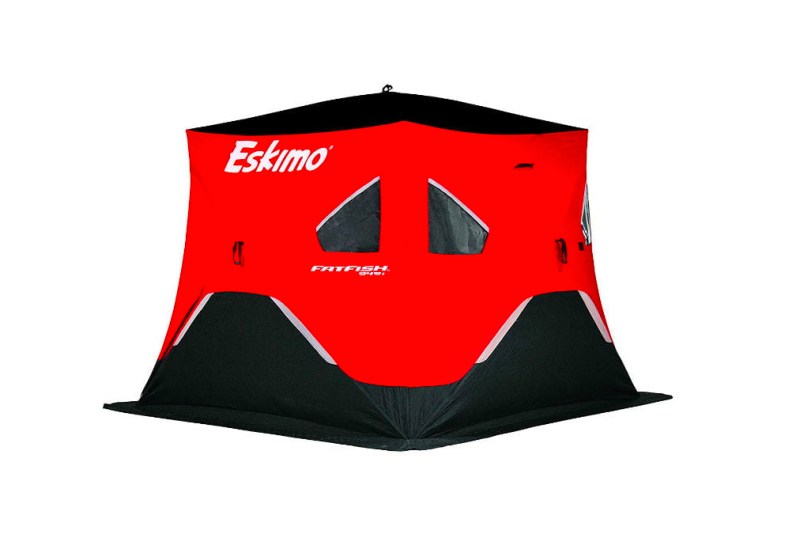
Shop Now















